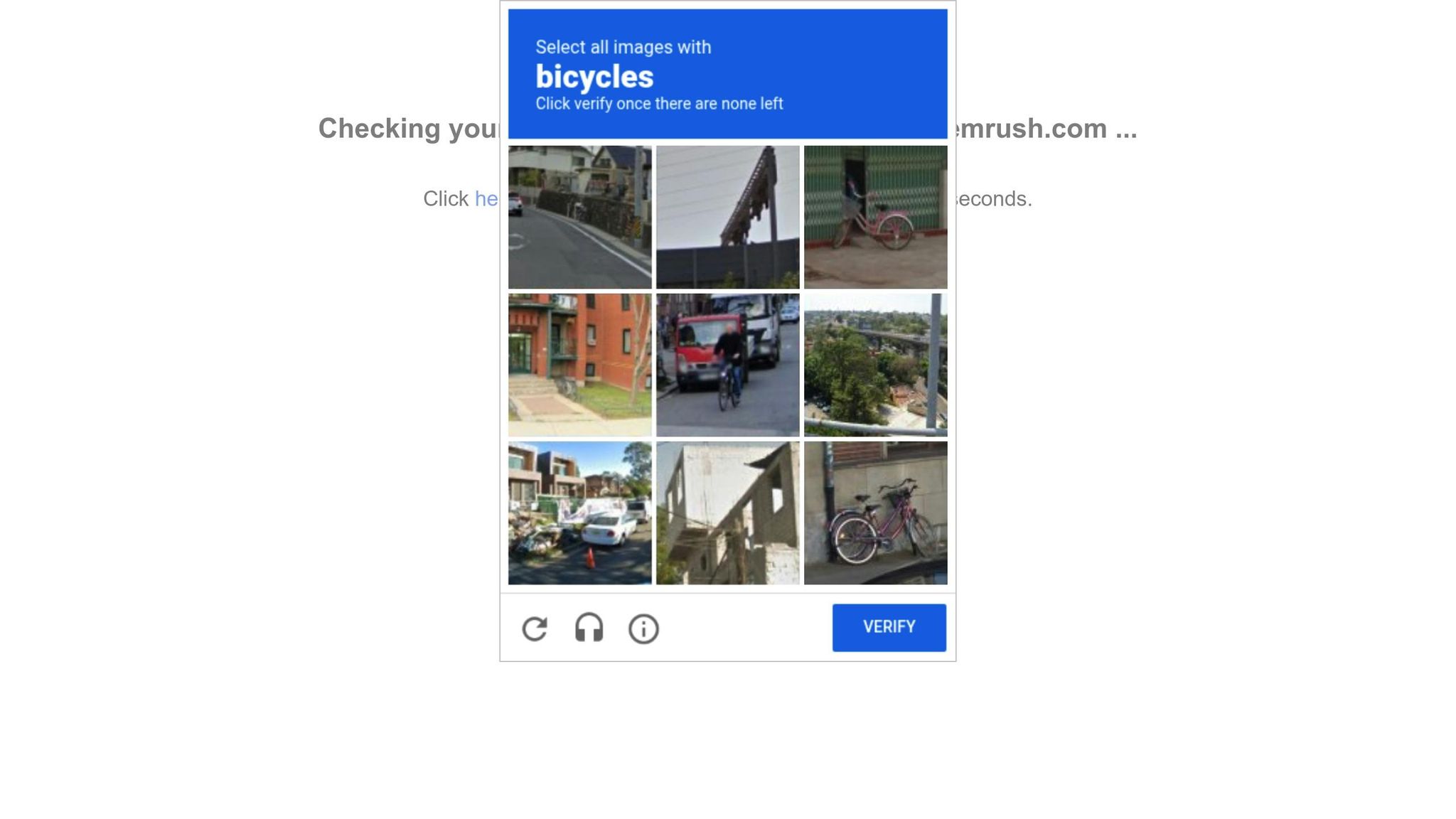The robots.txt file is a critical part of your website's SEO strategy. It tells search engines which pages to crawl and which to ignore. A poorly configured file can block important pages, waste crawl budget, or create indexing issues. Regular audits ensure your file aligns with your site's structure and goals, especially after updates or changes.
Key Steps to Audit Robots.txt:
- Locate the File: Access it at
https://yourdomain.com/robots.txt. - Check Accessibility: Ensure search engines can access it without redirects or errors.
- Review Syntax: Validate directives like
User-agent,Disallow,Allow, andSitemapfor proper formatting and spelling. - Disallow Rules: Avoid blocking essential resources like CSS or JavaScript that impact page rendering.
- Sitemap Integration: Include accurate and absolute URLs for your XML sitemaps.
- Test the File: Use tools like Google Search Console or Screaming Frog to verify how search engines interpret your rules.
Common Issues and Fixes:
- Accidental Blocking: Double-check broad disallow rules to prevent blocking critical pages.
- Syntax Errors: Ensure proper formatting to avoid misinterpretation.
- Broken Sitemap Links: Verify sitemap URLs return a 200 OK status.
Robots.txt | Lesson 8/34 | Semrush Academy

Robots.txt File Components Explained
Understanding the components of a robots.txt file is crucial before diving into a detailed audit. This simple text file uses straightforward commands to communicate with search engine crawlers, dictating how they should interact with your site.
The file lists its directives line by line, and details like case sensitivity and spacing can significantly impact how crawlers interpret the rules. It’s essential to save the file as plain text, avoiding any special formatting or encoding that might confuse bots.
Main Robots.txt Directives
The User-agent directive specifies which crawlers the rules apply to. You can target individual bots like Googlebot or Bingbot, or use an asterisk (*) to apply the rules universally to all crawlers. This directive essentially sets the stage for the rules that follow.
The Disallow directive is the most widely used and tells crawlers which parts of your site they should avoid. You can block specific pages, entire directories, or even certain file types. For instance, "Disallow: /admin/" ensures that no specified crawler can access your admin folder.
The Allow directive acts as an exception within disallow rules, enabling access to specific files or directories within a blocked section. This is particularly handy when you want to restrict a broad area but still allow access to certain key elements. Most major search engines recognize this directive.
Sitemap directives inform crawlers where your XML sitemap files are located. Unlike other directives, these apply to all crawlers and don’t require a specific user-agent. If your site uses multiple sitemaps for different content types or languages, you can include several sitemap directives in the file.
The Crawl-delay directive sets a pause between crawler requests, measured in seconds. While Google ignores this directive, other search engines like Bing honor it. For example, "Crawl-delay: 10" tells the crawler to wait 10 seconds before making another request to your site.
Comments, marked with a hash symbol (#), allow you to annotate your robots.txt file. These lines are ignored by search engines but serve as a useful way to document your decisions, explain complex rules, or note when changes were made. This makes it easier to review and update your file in the future without affecting crawler behavior.
How Robots.txt Works with XML Sitemaps
Robots.txt and XML sitemaps work together to guide search engines, but they serve different purposes. While robots.txt specifies what crawlers should avoid, sitemaps highlight the pages you want them to discover and index.
Conflicts between these files can create crawling issues. For example, if your robots.txt blocks a directory but your sitemap includes URLs from that same directory, search engines receive mixed signals. In most cases, crawlers will follow the robots.txt restrictions, but such inconsistencies might signal deeper site management issues.
XML sitemaps also provide metadata that robots.txt cannot, such as update frequency, last modification dates, and page priority. This additional information helps search engines allocate their crawling resources more effectively.
Finding and Accessing Your Robots.txt File
Before diving into an audit, it’s essential to locate and access your robots.txt file. Knowing exactly where this file resides and ensuring it’s accessible will help you analyze the same file that search engines interact with.
Where Robots.txt Files Are Located
The robots.txt file must live in your website’s root directory to work as intended. Search engines specifically look for it at the root of each protocol and host combination. For example, they’ll check locations like https://example.com/robots.txt and http://example.com/robots.txt to find the file.
In most cases, you’ll find your file at https://yoursite.com/robots.txt. If your site operates on both HTTP and HTTPS, you need a separate robots.txt file for each protocol. Keep in mind, search engines won’t search subdirectories like /seo/robots.txt or /admin/robots.txt - the file has to be at the root.
If no robots.txt file exists and a 404 error is returned, search engines assume there are no restrictions and will crawl all accessible URLs on your site. Additionally, subdomains are treated as separate entities, so each one needs its own robots.txt file. For instance, https://blog.yoursite.com/robots.txt would be necessary for a blog subdomain.
Ensuring the file is in the right location is the first step toward confirming its accessibility.
Ways to Access Your Robots.txt File
To check if your robots.txt file is publicly accessible, open a browser and type your domain followed by /robots.txt. This method lets you view the file exactly as search engines do, along with the server’s response.
Complete Robots.txt Audit Process
To ensure your robots.txt file supports your SEO goals, follow these detailed audit steps.
Check File Location and Accessibility
Start by confirming that your robots.txt file is accessible at https://yoursite.com/robots.txt. When you visit this URL, the server should return a 200 OK status. Use tools like browser developer tools or online HTTP status checkers to verify there are no unnecessary redirects that could interfere with crawler access.
Also, make sure the file size is under 500KB, as search engines only read the first 500KB of the file. Typically, robots.txt files are much smaller, often just a few kilobytes.
Find Syntax Errors and Invalid Commands
Pay close attention to the syntax of your robots.txt file:
- Use the correct casing for directives like
User-agentandDisallow. Each directive must follow the formatDirective: valuewith a colon separating them. Lines without colons will be ignored by search engines. - Double-check user-agent names for accuracy. For example, "Googlebot" must be spelled exactly as shown - variations like "GoogleBot" or "Google-bot" are invalid and may cause issues.
- Ensure comments start with a hash symbol (#). Any other characters at the beginning of a line could lead to parsing errors.
Examine Disallow Rules and Crawler Targets
Review your Disallow directives carefully to avoid blocking important resources like CSS, JavaScript, or images that search engines need to render your site correctly.
Be cautious with overly restrictive rules such as Disallow: / under User-agent: *, which blocks all crawlers from accessing your site. Unless this is intentional, modify or remove such rules.
Pay attention to trailing slashes in your disallow rules. For instance:
Disallow: /admin/(with a trailing slash) blocks URLs starting with/admin/but allows/admin.Disallow: /admin(without a trailing slash) blocks both/adminand any URLs starting with/admin/.
If you use wildcards (*), confirm they align with search engine guidelines, as not all search engines support them. This ensures your rules don't unintentionally restrict or misdirect crawling.
Verify Sitemap Links
Your robots.txt file should include accurate Sitemap directives with absolute URLs, such as Sitemap: https://example.com/sitemap.xml. Avoid using relative paths like Sitemap: /sitemap.xml.
Check that each sitemap URL returns a 200 OK status. Broken links to sitemaps can confuse search engines and undermine your site's structure.
For sites with multiple sitemaps, list each one on a separate line with its own Sitemap directive. This is especially crucial for large websites that use sitemap index files or separate sitemaps for different types of content.
Run Robots.txt Testing Tools
Once you've verified your file's accuracy, test it using specialized tools. Google Search Console's robots.txt Tester is particularly useful for checking how Googlebot interprets your file. You can test specific URLs to see if they are blocked or allowed based on your rules.
Test critical URLs, such as your homepage, main category pages, and essential product or service pages, to ensure they are crawlable. Additionally, validate your robots.txt file with multiple tools to catch any syntax errors or formatting issues that might affect other search engines.
Finally, monitor your server logs after making changes to see how various crawlers respond to your updated rules. This will help confirm that your adjustments are working as intended and that no important crawler access has been inadvertently blocked.
sbb-itb-5be333f
Common Robots.txt Problems and Fixes
Getting your robots.txt file right is super important. A single mistake can block key pages or resources, hurting your SEO efforts. Let's dive into some common pitfalls and how to address them.
Accidentally Blocking Important Pages
One of the worst mistakes you can make is unintentionally blocking pages or resources that search engines need to crawl. This often happens when site owners apply overly broad rules in their robots.txt file.
-
Blocking CSS and JavaScript files: Rules like
Disallow: /css/orDisallow: *.jsmight seem harmless but can stop search engines from rendering your pages correctly. Instead, use more precise rules to block only unnecessary files. -
Overly broad disallow rules: For instance, a directive like
Disallow: /products/might block your entire product catalog when you only meant to hide draft products. Similarly,Disallow: /blog/could prevent search engines from indexing your valuable content. -
WordPress-specific issues: Extending
Disallow: /wp-admin/to/wp-content/can block essential files, like themes, plugins, and media, which are critical for your site's functionality.
How to fix it: Audit your disallow rules carefully. Test each blocked URL pattern to ensure you're not unintentionally preventing access to important resources. Replace broad rules with specific ones - e.g., instead of Disallow: /products/, use Disallow: /products/draft/ to block only draft items.
Syntax Errors and Wrong Directives
Even small formatting mistakes can cause search engines to misinterpret or ignore your robots.txt file.
-
Common syntax errors: These include missing colons, incorrect capitalization, or extra spaces. For example, every directive should follow the
Directive: valueformat with proper punctuation and spacing. -
Unsupported directives: Some directives, like
Crawl-delay, work for certain search engines but not for others. Google, for instance, doesn’t recognizeCrawl-delay, so including it adds no value and can create confusion.
How to fix it: Validate your robots.txt file carefully. Use a plain text editor to avoid hidden formatting issues. Double-check that all user-agent names are spelled and capitalized correctly. This ensures your directives are properly understood.
Problems with Sitemap Directives
Sitemap directives are crucial for helping search engines discover your XML sitemaps, but errors here can waste crawler resources.
-
Using relative URLs: Writing
Sitemap: /sitemap.xmlinstead ofSitemap: https://example.com/sitemap.xmlmakes it harder for search engines to locate your sitemap. - Broken sitemap links: If your sitemap URL leads to a 404 error, it confuses search engines and disrupts crawling.
- Multiple sitemaps on one line: Each sitemap should have its own directive line for proper parsing.
- Wrong file formats: Pointing to compressed sitemaps without the right extensions or linking to HTML pages instead of XML sitemaps can cause errors.
How to fix it: Ensure all sitemap URLs are complete, functional, and formatted correctly. Test each link in your browser to confirm it loads properly. Use separate lines for each sitemap, such as Sitemap: https://yourdomain.com/sitemap-name.xml. Fix broken links immediately and verify that your sitemaps are valid XML files.
Monitor your updates by checking Google Search Console after making changes. The coverage reports will show whether your fixes resolved crawling issues and confirm that search engines can now access previously blocked resources. This ensures your robots.txt file is doing its job effectively while keeping crawlers on track.
Tools and Resources for Robots.txt Audits
Once you've verified your robots.txt file, it's crucial to keep an eye on its performance. The right tools can help you identify and fix errors before they impact your search rankings.
Best Robots.txt Analysis Tools
Google Search Console's robots.txt Tester is a must-have for understanding how Googlebot reads your file. It flags errors and warnings, and you can test specific URLs to see if they're blocked or allowed. While this tool isn't part of the new Search Console interface, you can still access it via the legacy version.
"It's important that your robots.txt file is set up correctly. One mistake and your entire site could get deindexed." - Backlinko
Bing Webmaster Tools provides similar functionality tailored for Bingbot. Since search engines may interpret robots.txt rules differently, using tools for both Google and Bing ensures better compatibility across platforms.
Screaming Frog SEO Spider allows you to test robots.txt files locally, catching potential issues before they go live. Its detailed analysis options go beyond simple URL testing, making it a reliable choice for technical audits.
SE Ranking's Robots.txt Tester stands out with its ability to test up to 100 URLs at once. Blocked URLs are marked in red, while allowed ones are green, providing a clear visual overview of any issues across multiple pages.
When choosing a robots.txt testing tool, look for features like:
- URL blocking verification: Test specific URLs, with bulk testing options for efficiency.
- Syntax error detection: Catch formatting mistakes, like missing colons or incorrect capitalization.
- User-agent testing: Check how different crawlers, like Googlebot or Bingbot, interpret your file.
- Sitemap link verification: Ensure your XML sitemap links are properly formatted and accessible.
- Pattern matching support: Accurately interpret wildcards (
*) and end-of-URL ($) symbols.
For quick checks, browser extensions like SEO Minion and SEOquake offer instant robots.txt analysis directly from your browser. They're great for spot-checking individual pages during audits.
"The robots.txt is the most sensitive file in the SEO universe. A single character can break a whole site." - Kevin Indig, Growth Advisor
ContentKing adds another layer of protection by monitoring your robots.txt file for unexpected changes. Real-time alerts ensure you're immediately aware of any modifications, which is especially valuable for large sites where unauthorized updates can go unnoticed.
For more technical users, simulating crawler behavior with curl commands and custom user-agent strings is another effective way to test your file.
Finding SEO Tools with Top SEO Marketing Directory
The Top SEO Marketing Directory is a go-to resource for discovering tools and services that go beyond basic robots.txt testing. This curated directory connects you with solutions for technical SEO audits, XML sitemap management, and broader site optimization.
Through the directory, you can find SEO software and agencies that specialize in robots.txt analysis as part of a comprehensive SEO strategy. Instead of juggling multiple standalone tools, you can explore platforms that integrate robots.txt audits into complete workflows.
Technical SEO experts listed in the directory bring in-depth knowledge to help you avoid common mistakes that could hurt your site's visibility. These professionals can craft robots.txt strategies tailored to your SEO goals and the nuances of different search engines.
"Robots.txt is one of the features I most commonly see implemented incorrectly so it's not blocking what they wanted to block or it's blocking more than they expected and has a negative impact on their website. Robots.txt is a very powerful tool but too often it's incorrectly setup." - David Iwanow, Head of Search, Reckitt
The directory also includes tools that analyze robots.txt files within the broader context of site health. This holistic approach helps you understand how your robots.txt file interacts with other SEO factors like internal linking, page speed, and crawl budget.
For specialized needs, the directory connects you with experts in areas like e-commerce SEO, local SEO, and mobile SEO. Enterprise-level solutions are available for large organizations managing multiple domains and subdomains, ensuring tailored strategies for complex setups.
Whether you're a small business or a large corporation, the directory offers access tiers ranging from free comparisons to premium enterprise solutions. Its key strength lies in linking the technical specifics of robots.txt management with your overall SEO strategy, ensuring your site remains optimized for search engines.
Maintaining an SEO-Friendly Robots.txt File
Keeping your robots.txt file in good shape isn't a one-and-done task - it needs regular attention. For websites that change often, like e-commerce platforms with constantly updated product pages and categories, a monthly review is a smart move. This helps ensure your directives stay in sync with your ever-evolving SEO strategy.
FAQs
Why should you audit your robots.txt file regularly, and how often is it necessary?
Auditing your robots.txt file on a regular basis is crucial because it directly impacts how search engines interact with your site. When properly maintained, this file helps manage which pages search engines crawl and index, keeps duplicate or less valuable content out of search results, and prevents bots from accessing sensitive information.
As your website grows with new content, structural changes, or updates, the robots.txt file might need tweaks to remain effective. To keep your SEO performance on track and ensure efficient crawling, aim to review and update this file at least once every three months or whenever you make significant changes to your site.
What are common robots.txt mistakes that hurt SEO, and how can you prevent them?
Mistakes to Avoid in Robots.txt Files
Errors in your robots.txt file can have a big impact on your site's SEO. Some of the most common problems include unintentionally blocking important pages or directories, which stops search engines from accessing valuable content. Another frequent issue is using the wrong syntax or formatting, which can render the file useless.
To avoid these pitfalls, stick to the correct syntax rules, double-check your disallow rules to ensure you're only blocking non-essential pages, and schedule regular audits to catch mistakes or outdated entries. When properly configured, a robots.txt file helps search engines crawl your site efficiently, improving your SEO efforts.
How do robots.txt files and XML sitemaps work together, and what are the best practices for optimizing their interaction?
Robots.txt files and XML sitemaps work hand in hand to guide search engine crawlers through your website. While the robots.txt file tells crawlers what not to access, the XML sitemap acts as a detailed map of the pages you do want them to index. Together, they help search engines better understand your site's structure and focus on the right content.
Here are some tips to ensure they complement each other effectively:
- Add your sitemap URL to robots.txt: Use the
Sitemap:directive to point crawlers to your XML sitemap. - Keep your XML sitemap current: Make sure it includes accurate URLs for the pages you want indexed.
- Avoid conflicting instructions: Don’t block pages in robots.txt that are also listed in your sitemap.
When your robots.txt and XML sitemap are aligned, search engines can navigate and index your site more efficiently - giving your SEO efforts a solid boost.


